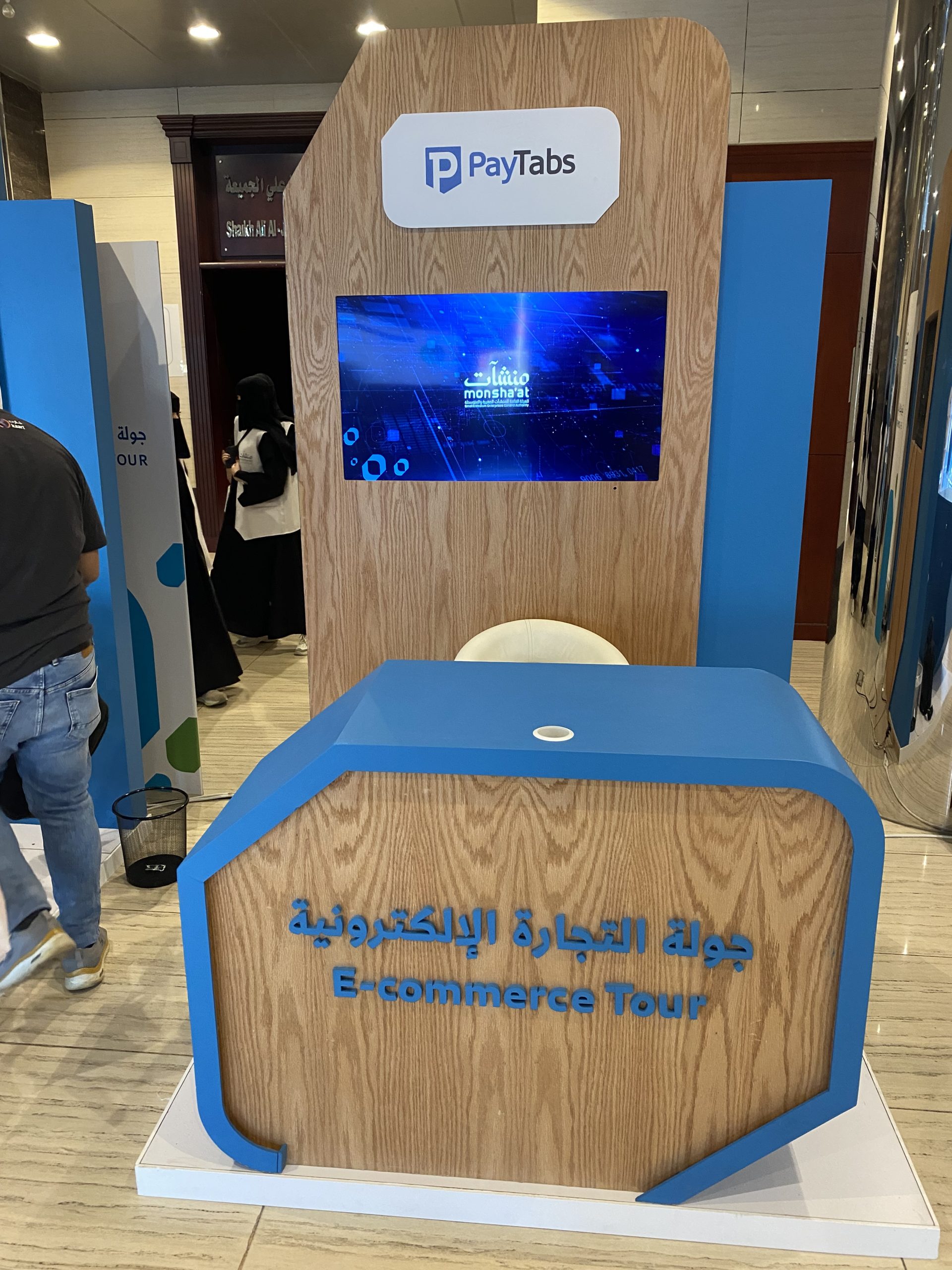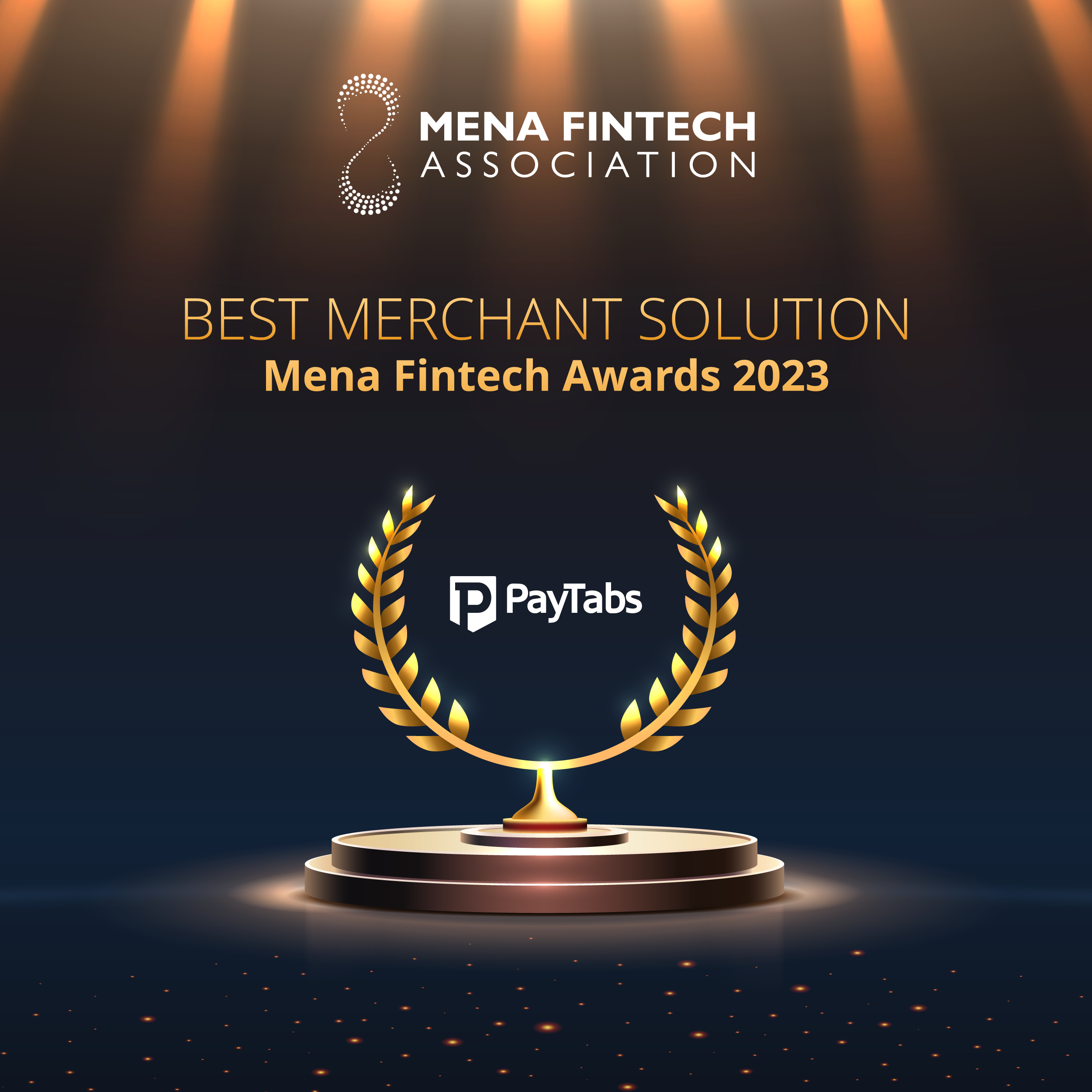How A.I. Can Supercharge Our Payment Gateway Game

A McKinsey article released in 2021 turned the spotlight on how the Middle East is steadily embracing digital payments and moving away from conventional cash transactions. Factors responsible for this paradigm shift include smartphone penetration at 80-90%, advanced regulatory initiatives, the recent health crisis, and the emergence of forward-thinking payment gateway providers.
In fact, the UAE witnessed a 9% annual growth rate in digital transactions between 2014 and 2019, while card payments in Saudi Arabia shot up by over 70% from February 2019 to January 2020. As per McKinsey’s survey, 60% of respondents in the Middle East revealed that digital wallets are likely to be the most preferred payment mode in the coming years, followed by cards (both credit and debit) and bank transfers. And payment gateways are all set to capitalize on this trend. Artificial intelligence in payment processing is especially setting the wheels in motion to create a win-win scenario for both sellers like you and buyers. Let’s try and understand this better now.
Why Artificial Intelligence (AI) is the Way to Go for Payment Gateways?
We live in a world where technology is driving the operational efficiency, cost optimization, profitability, and scalability of practically every business. Hence, leading providers like PayTabs enhancing payment gateways with AI doesn’t really come as a surprise, given the multiple perks of doing so. Here is a detailed look at how AI is changing the game of digital transactions:
• Bolstering Security
Fraudsters, hackers, and scammers are getting smarter every day and devising unique ways to steal sensitive information and private data. And unless the right measures are taken, online transactions increase the risk for both sellers and shoppers. Luckily, AI can step in here to detect malicious intent and action, stop unauthorized access, and shield both parties against various cyber threats. It can alert you about fraudulent transactions with the help of cutting-edge algorithms and analysis done in real-time. Using security strategies like predictive analytics and biometric verification can help strengthen your security system and earn the customer’s confidence.
• Getting Personal for Good
Understanding customers is simple with artificial intelligence in payment processing. From their habits and preferences to purchase patterns and challenges, you can get a good idea of everything you need to forge a deep bond. In other words, AI can make sense of large chunks of data that are captured when you enable customers to pay you digitally. By selecting a suitable AI-driven payment gateway, you can lend a personal touch to every shopper’s experience and nudge them to buy products they find useful or relatable. Even if you have a customer base that is growing slowly, cross selling vs upselling in this way can bring in more revenue. AI can also motivate shoppers to buy more by offering customized deals or discounts. For a quick checkout, it can automatically present them with their favorite method of payment. In the long run, this will retain more customers and drive loyalty.
• Speeding Up Processing
When you go for a gateway that thrives on AI, you can handle numerous, large, or complex transactions easily, even during holidays and sales. AI not only streamlines and automates manual, repetitive actions wherever possible but also minimizes mistakes. It also eases the integration of the gateway with multiple platforms, whether it’s a website or mobile application. Moreover, customers can enjoy a hassle-free experience across tablets, laptops, desktops, and smartphones. In fact, enhancing payment gateways with AI helps in picking the smoothest transaction method with the highest probability of success. The technology can also reroute a transaction in case data indicates that the particular method failed in the past.
• Preparing You for Global Expansion
If you want to expand to new shores and grow beyond the Middle East, you need a payment gateway that helps you accept multiple currencies from different parts of the world. Currency exchange should be a cakewalk, and the processor should be able to handle all rules and regulations associated with international transactions. An AI-powered gateway is the answer. This way, you can stay on the right side of the law while ensuring glitch-free cross-border transactions. Another plus is that AI helps localize the user experience so that no matter where you choose to branch out, your potential customers will get a payment interface and process that aligns with the language they use, their culture, tastes, and more.
• Making Customer Service Efficient
With artificial intelligence in payment processing, it is possible to cater to customers at any time. Unlike human customer support executives, virtual assistants and chatbots don’t need rest and are always available. AI also empowers them to handle a wide array of commonly asked questions easily and promptly. The best gateways also throw natural language processing (NLP) into the mix so that customer service feels human and relatable. Whether a customer is looking for a certain kind of product, discounts, or past transactions, AI-driven bots can tackle it all.
• Keeping the System Running Smoothly
We live in a world where it is possible to lose a customer even if there is the slightest snag during checkout or the payment gateway is not working for even a couple of minutes. AI can deal with this challenge easily by anticipating and troubleshooting problems before they crop up or blow out of proportion. This technology can automatically supervise and test the gateway at regular intervals, ensuring the payment process works without hiccups. Since there is no need for human intervention, you will have more time and energy to focus on core business aspects. Moreover, AI will help you use the gateway’s bandwidth judiciously and spread transactions evenly across servers. Hence, the overall system will be fast and smooth. You won’t have to worry about conducting updates by due dates, either.
• Taking Profitability to New Heights
Top players like PayTabs offer AI-powered payment solutions to help businesses enhance profit margins, irrespective of size or nature of establishment. They enable you to accept payments on time, safely, and efficiently. This leads to a positive and stable cash flow. The best gateways also charge you competitively, and there are no hidden costs. Features like advanced data analytics help you identify strengths and weaknesses and zero in on techniques to boost future sales and revenue. AI-driven gateways can drive operational efficiency by automating and streamlining most processes. It can also reduce or eliminate the cost of human-induced errors on the way. Apart from handling large transaction volumes and forecasting demand, you will be able to allocate resources properly, minimize cart abandonment, and leverage customer feedback to boost satisfaction levels. All of that will translate to a better bottom line.
In a Nutshell
In the coming years, using artificial intelligence in payment processing will not only be preferable but essential. You will need an AI-backed payment gateway to stay relevant and thrive in a fast-evolving environment dominated by ecommerce. However, the presence of multiple providers can make it difficult for you to make a decision easily. Hence, make sure you exercise due diligence. Gather adequate information about at least a few providers, request demos, compare their services and quotes, and don’t forget to check testimonials. Remember that the one you choose should not only align with your business’s unique needs but also your budget.
What is Payment Orchestration, and Why is It Essential for Any Business?
Introduction
In consonance with the ever-evolving demands of the burgeoning digital marketplaces in the UAE and the greater Middle Eastern geographies, businesses are continually seeking more efficient and secure payment processing methods.
This is where the concept of payment orchestration comes into play. It has emerged as a crucial shot in the arm for forward-thinking organizations, especially ecommerce players. The orchestration process simplifies how companies manage their financial transactions.
In this blog post, we will discuss how payment orchestration platforms have become integral to the processes and stand at the forefront of providing seamless payment solutions.
The Basics of Payment Orchestration
First, let us explore the fundamentals of the orchestration processes.
What is Payment Orchestration?
Payment orchestration stands for the strategic coordination of all components related to payment processing within an organization, including payment service providers, banks, apps, etc.
What is a Payment Orchestration Platform?
In this context, we also have to understand what is a payment orchestration platform. The answer is that businesses use a centralized payment orchestration platform (POP) to manage, streamline, and optimize all the payment transactions originating from multiple channels and payment methods.
Key Components and Functionality
Here’s a detailed look at the fundamental elements:
• Centralized Dashboard
A centralized dashboard allows businesses to monitor transactions, manage payment service providers (PSPs), and view real-time analytics and reporting.
• Payment Gateway Integrations
Payment orchestration involves integrating multiple payment gateways, enabling businesses to connect with various payment methods and processors through a single interface.
• Routing Engine
It directs transactions to the most appropriate payment processor based on predefined rules.
• Payment Processing
The POP also handles the authorization and settlement of transactions. This process must be seamless and secure, ensuring funds are correctly transferred.
• Fraud Detection and Security Layers
The system includes fraud detection algorithms and security protocols to protect against unauthorized transactions and ensure compliance with industry standards like PCI DSS.
• Multi-Currency and Cross-Border Transactions
A payment orchestration platform should be able to handle transactions in multiple currencies and across different countries, which is essential for global businesses.
How Payment Orchestration Works?
Understanding what is payment orchestration is to recognize that this system meticulously directs each payment to the ideal payment solution, taking into account variables such as the shopper’s location and preferred method.
Payment orchestration employs intelligent routing to ensure each transaction is processed through the optimal channel. This not only maximizes transaction success rates but also enhances the efficiency of the payment process.
In case an obstacle emerges, such as a gateway experiencing downtime, the orchestration platform immediately reroutes the transaction to an alternative processor. This agility is key to maintaining a smooth payment experience and avoiding transaction abandonment.
Furthermore, payment orchestration platforms leverage transaction data to improve their routing logic constantly. This results in a system that becomes progressively more adept at foreseeing the most effective transaction pathways.
Benefits of Best Payment Orchestration Platforms
Payment orchestration brings a plethora of benefits to the table, which can be particularly transformative. By embracing the best payment orchestration platforms, companies are enabling a strategic advantage that can propel their growth.
Here are some of the key advantages:
• Improved Payment Processing Efficiency
By leveraging the capabilities of top-tier payment orchestration platforms, businesses can unify multiple payment processes and gateways into a cohesive operation. This integration simplifies the payment landscape, allowing merchants to reduce the time and resources typically required to handle separate systems.
• Enhanced Customer Experience
Customer experience is paramount, and payment friction can be a significant roadblock. A payment orchestration provider plays a critical role in mitigating this. Businesses can significantly improve customer satisfaction by quick checkout processes, offering a variety of payment options, and providing a seamless payment experience irrespective of the customer’s device or location.
• Cost Savings and Optimization
One of the more tangible benefits of engaging with payment orchestration companies lies in cost savings. Managing multiple contracts, integrations, and transaction fees with various payment gateways can be financially burdensome. Payment orchestration simplifies this by consolidating operations and often reducing transaction decline rates.
• Payment Orchestration vs Payment Gateway: Cross-Border Transactions
When contrasting payment orchestration vs payment gateway solutions, the former’s superior handling of cross-border transactions cannot be overstated. Payment orchestration platforms provide businesses with the tools to handle different currencies, comply with regional payment regulations, and offer international customers the most suitable payment options.
Challenges in Payment Processing
Despite its many benefits, there are some drawbacks to the orchestration system:
• Complexity of Payment Ecosystem
With the proliferation of online transactions, there’s a growing diversity in payment methods, including traditional credit and debit cards, digital wallets, and bank transfers.
• Security and Compliance Concerns
Payment orchestration platforms must prioritize security and compliance, especially in regions with stringent regulations like the UAE and the Middle East. Businesses must comply with various financial regulations that vary by country and region.
• Scalability Issues
A payment orchestration provider must offer solutions that scale with the business. When scalability is not adequately addressed, enterprises may encounter transaction bottlenecks, slow processing times, or even system outages during peak times.
Selecting a Payment Orchestration Solution
Here are some essential aspects you must consider before choosing an ideal solution:
Factors to Consider when Choosing a Payment Orchestration Provider
When selecting a payment orchestration solution that aligns with your business needs, besides scalability, cost parameters, security, and compliance, several other critical factors come into play, such as the following:
- Integration Capabilities: Assess the ease with which the platform integrates with your existing systems. A seamless integration means less disruption to your operations and a faster transition.
- Payment Method Coverage: Ensure the platform supports a wide range of payment methods, including those popular in your specific market, to cater to all customer preferences.
- User Experience: Consider the impact on the end-user experience. The solution should facilitate a smooth and quick payment process for your customers.
By considering these factors carefully, you can choose a payment orchestration provider like PayTabs, which offers a comprehensive solution tailored to the specific needs of your business.
Case Studies of Successful Implementation
PayTabs is a prominent payment solutions provider in the Middle East, renowned for empowering small and medium enterprises (SMEs) with streamlined and secure online payment processes.
The platform has recently partnered with Invoice Bazaar. This strategic alliance aims to bolster working capital solutions for businesses grappling with the economic challenges posed by the COVID-19 pandemic.
Through this collaboration, PayTabs’ clientele in the UAE can enhance their financial liquidity by swiftly monetizing their receivables with Invoice Bazaar’s support, ensuring their operations remain robust during these turbulent times.
Moreover, this partnership underscores PayTabs’ commitment to innovative financial solutions and continued expansion, serving businesses across various industries in multiple currencies.
Popular Payment Orchestration Providers
Some of the most popular payment orchestration providers include PayTabs, Payoneer, Stripe, Telr, etc. Before choosing the most suitable option, rigorously check their compatibility with your business, the ease of integration and the diversity of use cases, among other aspects.
Integration and Implementation
Here’s how businesses must proceed with integration and implementation.
Steps to Integrate a Payment Orchestration Provider
- Requirement Analysis: Begin by assessing your business’s specific payment needs and the challenges you face with your current payment systems. This will help you identify the key features you need in a payment orchestration layer.
- Payment Orchestration Provider Selection: Choose a payment orchestration provider that best fits your requirement analysis.
- System Integration Planning: Create a detailed integration plan that includes timelines, milestones, and allocating resources and personnel.
- Technical Setup: Install the necessary software or platforms and set up the infrastructure required by the payment orchestration system.
- Testing Phase: Conduct thorough testing to ensure the payment orchestration system integrates well with your existing setup.
- Staff Training: Train your staff on using the new system, focusing on transaction processing, troubleshooting, and understanding the new workflows.
- Go-Live and Monitoring: Continuously monitor the system to ensure it runs smoothly and quickly address any issues.
- Feedback and Optimization: Collect feedback from users, analyze system performance to identify areas for improvement, and work with the provider to optimize the system accordingly.
Best Practices for Implementation
Adopting best practices can facilitate a smooth transition, such as —
• Engage with Expert payment orchestration companies
Partner with established payment orchestration companies like PayTabs, which have a track record of successful integrations and can provide insights tailored to your business’s needs.
• Comprehensive Planning
Before implementation, it’s vital to have a detailed plan that thoroughly assesses your current payment infrastructure.
• Staff Training
Ensuring your team is well-versed with the new system is essential.
• Testing and Validation
Implement in phases and rigorously test the system before full-scale deployment.
Common Pitfalls to Avoid in the Payment Orchestration Layer
Some common pitfalls in this process include:
- Overlooking the complexities of integration
- Selecting providers that are not properly vetted by the industry
- Choosing a payment orchestration provider that hardly aligns with the business’s needs
Real-World Applications
Here are some actual applications of the orchestration systems.
• E-commerce and Retail
Payment orchestration streamlines online transactions, making it a boon for e-commerce and retail sectors that demand diverse payment options and rapid transaction processing.
• SaaS and Subscription-Based Services
Payment orchestration platforms offer SaaS and subscription-based services, the tools needed for managing recurring payments and multiple subscription models.
• Travel and Hospitality
For travel and hospitality businesses, payment orchestration can help them efficiently cater to international customers with varied payment preferences.
• B2B and Cross-Industry Applications
B2B and other industries can utilize orchestration to manage complex payment processes and reconcile transactions across different systems.
Conclusion
To conclude, payment orchestration is a critical component for any business, especially in the tech-savvy regions of the UAE and Middle East. PayTabs, as a leading payment orchestration provider, exemplifies the fusion of innovation and efficiency, helping businesses easily navigate the intricate payment processing landscape. To learn more, contact us today!
FAQs
-
1. How does payment orchestration work?
Payment orchestration works through a centralized system connecting multiple payment gateways and processors, routing transactions based on the best outcome for cost, speed, and success rate.
-
2. What is an example of payment orchestration?
An example of payment orchestration would be a multinational e-commerce platform that uses PayTabs to manage transactions across various currencies and payment methods, providing a seamless user experience.
-
3. What are payment orchestrators responsible for?
Payment orchestrators are responsible for seamlessly integrating various payment processing services, ensuring transactions are secure, compliant, and optimized for both the business and its customers.










